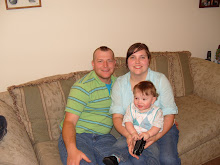A constructionist approach to learning is all about the end product. They should "construct" something when learning. It is taking an experience and putting it into their schema. Trying to keep their schema equal with their experiences. When approaching something new or similar to an all ready learned object the common thing to do is to assimilate the object. This is to gather the information about the object and then apply it to their current schema about that object.
Technology can play a part of the constructionist theory. The teacher can use a technology program to have the students show how they can construct their learning of the current subject. Many programs are a good choice for students to show their understanding of a subject. Power Point is an excellent choice for students to use. It is not just for the teacher to provide notes on a subject. The students can use it, and add in many point in a unit of study as a presentation. There are man web resources that encourage students to show understanding. They can construct simulations that would normally be to hard to implement and would be very costly(Hubbell, E., Kuhn, M., Malenoski, K., Pitler, H., p. 213).
The constructivist theory is a very hands on theory. The students are involved in their learning of the end product. They must construct or build something to show their understanding. It can be brought into the current classroom by implementing new technology programs for the students to use as a culminating activity.
Wednesday, March 24, 2010
Subscribe to:
Post Comments (Atom)

Brandy,
ReplyDeleteThe more I learn about the constructionist theory, the more I can't believe why everyone isn't practicing it! To me, it is a no brainer that students learn better when they are actively involved in their learning and are producing tangible artifacts to reflect their newfound knowledge. The way students are learning in the classroom has changed so much from when I was in school (which really wasn't all that long ago) and it is exciting to think how it will continue to evolve with the change in times.
J. Robinson
Brandi,
ReplyDeleteI use the practices of constructivism in my pre-k classroom daily as I am sure you do each day. Our children have such limited schemas and need a great deal of sensory experiences to achieve equilbration. Bringing technology experiences, beyond tutorial practice, into the mix has been tough for me.
Brandy,
ReplyDeleteI used to create and control power point all the time. Recently, I have cut back and let my students create slides to help teach the class. It has been a welcomed activity in my classes this year. I think constructionism is a valuable tool teachers need to tap into, for better gains in their classrooms. Sometimes, I feel jammed up with so much curriculum and I sacrifice projects and problem solving, for reviews and drills on key content.
Jay
J. Robinson,
ReplyDeleteIt does seem like that education is turning more in this direction. They want everything to be hands on and manipulative. I agree that is how most students learn best. My only gripe is if that is how we are teaching and the students learn better than why are we still giving these tired old state tests that are paper and pencil?
Brandy Rainey
Julie,
ReplyDeleteI do the same with the hands on experiences daily. I have found it much more fun for the kids to use technology for more than just routine practice. I see that they will get more use out of the technolgy for giving them exposure to new experiences. They do more of the drill practice on computer in Kindergarten and at home.
Brandy Rainey
Jay,
ReplyDeleteI can see where the day to day stuff can bog you down. It just seems like there is never enough time in the day to get through the content and have time for "fun" stuff too. I think it is wonderful to have the students take control of their learning. I have always found that if you can teach someone else something you yourself must know what you are talking about.
Brandy Rainey